Ever wonder what it’s like to be the mayor of your very own city?
You’ve got a lot of responsibilities on your hands — taxes, energy management, infrastructure, the import and export of goods, housing, law enforcement, and a grocery list of other important things that will keep you busy. It isn’t easy being the mayor, especially if you want your city to thrive. With every day bringing new opportunities and problems alike, how will you keep your city functioning like a brand-new clock? Feel the pressure and play Megapolis… Okay, minus the pressure.
From the same folks who brought you Wild West: New Frontier and Dragons World, Social Quantum Ltd. released yet another management game under their belt that’s been constantly updated for almost 10 years as of this article. Megapolis harkens back to a time when SimCity was the city building simulator. While this does indeed feel reminiscent of such a legendary title, Megapolis is a lot more laid back in nature offering a more relaxed and casual experience. It also comes with features that allow you to play with friends.
If you come together, you may all form a state and donate goods to each other to further the progress of all your cities. While joining up with some friends and helping each other out can only get you so far, you’ll always have to worry about your own city first. You have lots to do on your plate and we’re here to help you out!
Are you a novice mayor? Were you elected in by means of a political dynasty or otherwise? Have you been chosen for the people, by the people? If you said yes to all of these questions (or at least the first one), then read our Megapolis beginner’s guide below!
City Building for Dummies (and Mayors)
Megapolis is a lightweight city simulator with a side of tycoon-style gameplay in it. You basically manage a city wherein you build new buildings, expand its territory, produce materials and manufacture products — the list goes on. There is surprisingly plenty to do in this game in that it has an extensive task list and an infinite set of job orders.
Granted that this is primarily a management game, almost anyone can play it without the fear of facing neither difficulty nor complexity. It can be picked up anytime, anywhere, and all it takes is for you to do anything within the game. Megapolis also has a lot of stuff going on wherein there are things that need to be waited for such as taxes and housing. Item production requires some waiting as well, but we’ll get to that later.
To keep a city running smoothly, you will require power plants and water towers. The power plants (solar or otherwise) power the various buildings all throughout your city while the water towers provide water to residential buildings or places where people stay like hotels. You can also view what your city’s stats are like by tapping the resource bar under your EXP bar on the top left (see the above photo).
If your water capacity or your energy capacity is filled, you won’t be able to build anymore buildings — specifically the ones that utilize those. Naturally, the more of these you have (e.g. more houses), the more of that one resource they will consume.
It also pays to see what lies around your city once in a while. Outside of your city borders are other, pre-built structures such as the Furniture Store or the Airport. These buildings have their own special functions. For example, the Train Station is another form of income while the Airport provides ways that you can get other building materials received (more on this later), speeding up your progress. The Furniture Store sells expensive furniture that takes time to construct.
Lastly, a building’s position isn’t set in stone (pun intended). Giving a building a long press will allow you to store it for later or even move it around your city. How you arrange this is up to you, but we’ve got a few efficient suggestions up ahead, so keep reading if you want in on our secrets.
These are the basics of Megapolis! Keeping these in mind will carry you forward as you play. Now that these have been said, let’s proceed to the meat of this guide.
Tips for Making a Beacon of Modernity
Power plants and water towers aside, there are but many other ways on how you can make your city more efficient. Some of them might even sound a little strange, but trust us, they work just fine.
Let’s get your city out on the map!
1. Keep Buildings of Similar Purpose Close Together
Whenever you go downtown (if you live in the city), do you remember which buildings or establishments are stuck together?
Oftentimes, buildings that do tend to be stuck together are restaurants, utility buildings like hardware stores and electronic/appliance shops, car goods and car washes, etc. It certainly adds to the convenience of the customer, but we have to remember that businesses that are alike are usually competitors.
Restaurants are in direct competition of each other since they have to sell their food to us whenever we see them. One of them has to make the sale and eventually, one of them will lose great profit margins and be forced to close. As unfortunate as that may be, that’s just how business is — it’s a merciless and cold world where only the strong survive… But not in Megapolis, it’s not!
Putting buildings of similar function together is a simple and easy strategy in Megapolis. Put establishments, houses, stores, and factories together so you can make collection easy. Once taxes come up, new neighbors have settled in, and things have been manufactured, gathering all these will be easy for you since they’re all in one place.
Not only does it feel right, but it also looks great! Just imagine how aesthetically pleasing it must be to see an industrial district, a business district, and a residential district. Having your city grow like this just makes it feel very alive. It can certainly get crowded, though.
Because your districts will become more and more dense as your level rises, while waiting for anything in manufacturing, try to listen for a soft “do-dock!” kind of sound. This sound signifies that something is ready to be collected. If you don’t know where it might be coming from, try scrolling to your residential area or your industrial district. You’re bound to find stuff popping up there!
Mind you, having your buildings of identical purpose all stuck together will keep you very busy. Some buildings file their taxes or house residents faster than others, so it pays (pun unintended) to keep your eyes peeled. Having yourself this busy will also, in turn, help your city grow since you will also be able to focus on other stuff like adding more buildings.
Of course, you’ll notice very quickly that collecting items can somehow get tedious because of the varying building height. There is a way around this.
2. Short Buildings Up Front, Tall Buildings at the Back
Is the view of the city from the top or the side? Is it always impossible to see what’s behind things? This, dear reader, is what you call an isometric view.
If you aren’t already familiar with the term, an isometric view emulates a 3D object in a 2D environment. You can tell that it has edges and shapes, but you can only see certain sides of it. These sides give out clues to your brain and tell it that the object itself has all its sides intact.
This, in itself, is a means to show the viewer that the object they are looking at has lots of detail on it, still, without having to render it on a flat background. The isometric view is popular among video games and has since spawned legendary titles like the very first StarCraft, Diablo titles 1 and 2, Baldur’s Gate, Fallout 2, and the very controversial Hatred.
This view is quite popular in the mobile gaming market and has also a slew of various games out there that are set in it. A few examples that you might have played that have it are Cookie Run: Kingdom, Dragon Tamer (when you are on your island), King of Avalon (at your bastion), Solitaire: Home Design, Homesteads, and Bermuda Adventures. Megapolis adopted this view because most of what you’ll be seeing are buildings and sadly, some taller buildings will really dwarf the smaller buildings behind them.
Putting tall buildings in front of smaller buildings is an option but should be a no-no. The reason behind that is you’ll be misclicking the big ones instead of the small ones, especially when you have to perform tax collection or if you need to house residents. Don’t get us started if these smaller buildings are factories. Let us spare you of the frustration and show you what you can do to make your city easier to look at.
Put small buildings in front and tall ones at the back. Isn’t that simple? It makes collecting any stuff you have out there a breeze and it also makes everything look great (again with aesthetics). We’re not gonna lie here: the detail on the buildings, especially the real-life ones, are incredible and if you wanna admire the surprisingly accurate architecture and design, keep them in plain view.
The smaller buildings also have some interesting designs that we’re sure you’d want to see. Functionally, you’ll also get to plot out the next buildings you wanna put out there. It pleases the eyes and helps you see where else you can build more stuff!
Speaking of making space, did you know that roads are purely for visuals? No, really!
3. No Roads? No Problem!
Roads — whether literally or metaphorically, they are wherever we go.
They help bring us to work or school, they’re what we follow if we want to find a place to eat on a Saturday night, they’re what can eventually take us home. They are also the symbol of opportunity as new turns mean new adventures wherever we are in our lives. They also exist in video games that have cities in them.
In titles like Cities: Skylines, roads are important because emergency vehicles use them when anything adverse happens in your city. As much as their real-life counterpart, the roads in that game are extremely important. In Megapolis, roads are more for aesthetics than anything — this means that your city can thrive without roads at all! Don’t believe us? Let us tell you how and why.
To be clear, we aren’t saying that having roads is a bad thing; they’re just not as necessary as you’d think they are. You can keep them to a minimum and if you do want roads in your city, then you may have them at all means. But if you’re after an efficient beast of a city, start removing your roads and make way for even more buildings.
Each road piece takes up a dimension of 1×1 squares on the grid of your city. This space can be better used for other stuff, more efficient buildings for production and profit (thinking like a real businessman here). If you remove all of the roads, imagine all the space you have. You’ll build your city quicker. You won’t have to worry about having vehicles pass to one establishment to another, or how visitors get into your city, just get rid of the roads and your city will do just fine.
Of course, roads look aesthetically pleasing. If you’re after a more realistic image of your city, the choice of having roads is entirely on you. Just plan ahead where you’d wanna build your new buildings.
We mentioned earlier that this type of setup is more efficient. Let the next item be the only road you’ll need in this game: the road to success!
4. Do Your Tasks for Fast Progress
Task lists are a great way to keep players busy in almost any game they’re in.
Much like in real life, tasks keep us busy and they often give us meaning in our lives. We’re always trying to complete tasks every day, no matter how big or how small. Consider what you have to do between now and tomorrow or between next week and next month. You finish them, you get rewards in your own right, you even learn from what happened and what you accomplished. These are similar to having a task list in a game.
Megapolis has its own set of tasks. A lot of these range from erecting new buildings to producing batches of materials and supplies. Thankfully, without the use of any of the roads, doing this shouldn’t be a problem. Upon completing any of these tasks, you’ll be given money and experience points. Additionally, you might even get paid in Megabucks. Not only does completing your tasks get you paid, but it also gets you through levels very quickly.
Rising through your levels is a reward even more well-deserved. The more levels you surpass, the more things you unlock. The more things you unlock, the quicker your city improves. If you think your city is somewhat not as efficient as you’d hoped, try finishing your tasks. There are a lot of these so getting paid for city projects means more EXP and more Megabucks.
Of course, as you do your quests, it doesn’t hurt to keep your factories busy and have them produce items on the side.
5. Produce Quick Items While You Play
Every city (or country, mostly) has an export of some sort. It could be traditional crafts, signature products, or anything that might be recognized worldwide. What product does your city export?
In almost every city out there, there’s a factory that produces something. It could be your favorite snack, processed raw material, and many other things. Factories are what make a city’s businesses thrive. Without the buying and selling of products anywhere, this can be one cause for the city’s economy to suffer. Just like what happens in real life, your factories in Megapolis should be working.
Factories can produce various products simultaneously if you have multiple factories present, but each item has its own timer. For instance, iron is the quickest to produce and multiple batches of these can be simultaneously manufactured. You will have to worry about storage space if you are in excess of this, though. To check for the time an item needs to be produced, simply long press any item without dragging them down into the production squares. Factories aren’t the only ones that produce items, though, there are also stores.
Stores, on the other hand, produce items one at a time. They are more difficult to manage since different quests and orders will ask for different products. Unlike materials from factories, the items produced in stores will require raw materials from the factories. They can only be made depending on what you currently have on hand are produced via a queue rather than by batch.
For instance, a hammer will require iron and wood to be produced and will be made one by one, even if you have three hammers waiting. Juggling your priorities for production and how you do it are both for you to handle. Furthermore, stores are all singular while factories can be built multiple times. Meaning, you cannot have more than one Tool Store or similar facilities thereof, do producing these items will certainly take a while. But with all of these items that can be produced, which ones should you produce?
The quick answer here is to constantly make anything that has a timer under 10 minutes. Doing this while you play the game will make you forget that you’re even making these — it’s like a trick that’ll fool yourself into thinking that you aren’t really making anything. The next time you check your factories and stores, you’ll be surprised that you’ve actually made these things. Just don’t get carried away or you won’t have room for other things. Make these items for as long as you’re playing the game and according to what the Order Board (more on this later) or what your task list need.
There are items that do require longer waiting times. Let us tell you how to handle these.
6. Produce Long Items While Offline
Quick items have an opposite!
Longer items have, well, much longer waiting times. These times can range from 30 minutes onward, sometimes spanning a couple of hours (whoa). Items such as these are far more complex and they are often used in difficult job orders to complete. Examples of such items are paint, rubber, and paintings. The former two come from the Homewares Store while the latter comes from the Home Decor store. What makes them so complex is the material required to craft them (and don’t get us started on reagents). If you do choose to make these, be sure to fill up your production squares or you’ll be stuck with that order forever.
Many of the quick items (iron, especially) will be required, so making these in advance before you move onto the more complex items is a must. Make a lot of them, but not enough to fill up your warehouse. If you feel like your warehouse might be full, pay attention to the upper-middle portion of the screen — you will see numbers and a big red box icon. This is how much material you have in your warehouse.
Granted that each of these have long waiting times, it’s best to make these right before logging off. As soon as you feel like you’ve had your fill for the day (or at least for the few hours you’ve played), set those factories and stores into overdrive and make them produce the items with long timers.
The next time you log back on, you’ll be happy you did because that way, you’ll complete your tasks and orders much faster. Megapolis borders on being an idle game, so many of the items you leave in production will stay in production even while you’re offline. How convenient is that?
There is one problem that comes with making new buildings and generally trying to keep the city running: it all costs money. Are you running low on funds? Try the next item below!
7. Low on Money? How About Completing Job Orders?
Eventually, you will run your city’s reserves dry.
Is this a form of corruption? Well, not necessarily. Consider it corruption when you’ve used it for frivolity (unfortunately, the game doesn’t allow you to do that). Most of the time, the money you gain will be spent on putting up new establishments, factories, or unlocking more functional buildings outside of your city. The cost of these will rise as you proceed into the game, and it’s best that you get a steady flow of income and fast. You can earn some quick cash by completing job orders.
What are job orders, you ask? They’re special tasks that only require the manufacturing of materials and products — no new building needs to be erected. Simply having all the items required to complete the job order will be enough. If you are a fan of RPGs, your task list is the main quest while your job orders are the side quests. More often than not, the sidequests are what make your character richer and stronger faster than the main quest, but sometimes this isn’t entirely true in Megapolis.
Here, after tapping the helicopter icon on the lower-right portion of the screen, you will see an infinite supply of free tasks that will also help you level up. Apart from this, they also pay rather handsomely. Naturally, the more difficult the job order (e.g. those requiring complex products and lots of your time) pay you more than the smaller jobs. You can do the smaller jobs as you play the game so you don’t run too low on funds, but you can also work toward the bigger ones for tons of money and EXP. Not to mention, this can also keep you busy while you manufacture the longer-timed items aside from task completion, of course.
While the EXP gains are large, this may help you advance in level as well, just not as quickly as you would while performing your tasks. This doesn’t also make your city develop faster either. Another way it provides help is that it helps you clear out your warehouse of any excess material you might have, making more space for new material that you will need for the larger and more complicated job orders or projects.
As it does help clear space in your warehouse, you might still have trouble managing it. Here’s what you can do to help manage storage space.
8. Use Megabucks for Slots and Expansion (If Necessary)
In almost every mobile game that exists today, premium currency is inevitable.
They all come in various forms — gems, diamonds, tokens, and many different icons that catch the eye. They’re pretty, they’re expensive… they’re pretty expensive. Most of the time, they can be bought using real money or just by playing the game. The former method earns them faster, of course. In the case of Megapolis, the premium currency are wads of cash bonded together called Megabucks.
Megabucks are a powerful currency available to any mayor that runs their task list actively. Seemingly, the most efficient feature that Megabucks can provide is to fully automate tax collection and the housing of new residents. What this does is that whenever establishments file their taxes, your tax collectors will automatically take them while you do other things.
Administrative assistants will also house new residents on your behalf. You can also use Megabucks to spend for missing material to fulfill tasks, job orders, or projects like building your airport or railway. While all of these sound amazing, they’re all actually quite expensive — your Megabucks could be better spent elsewhere.
Instead of automating tax collection and resident housing, or spending for missing material, one thing you can spend on is city expansion. Expansion is common in most management games and it allows you to build more structures and grasp a larger territory on the map.
This way, you’ll be able to progress through tasks better or make even more production buildings to fulfill your job orders. You’ll also give your somewhat congested city (trust us, it will look a bit congested as you play) some room to breathe. How cool is that? Besides, collecting taxes and housing residents yourself keeps you busy and therefore it draws you into playing the game more.
Another thing your Megabucks are better spent on is the purchasing of slots for production buildings and warehouse space. Let’s face it, sometimes, you need that extra queue when you’re making hammers or scissors. Megabucks can help you with that. Are you almost out of warehouse space? Do you want to bump your warehouse slots from a 30 to 50 or higher? Megabucks will make that happen. If you want efficiency in making your city as productive as possible, this is the best place to start. Give it a try!
Eventually, you will wonder: “Where can I get these building materials?” That’s no problem, dear reader! Feast your eyes on the next item!
9. Join a State for Materials
Guilds!
Since time immemorial, guilds are a means for players to connect, communicate, and play the game together. While some players prefer to play the game on their own, sometimes they miss out on a great deal. There are some guild-exclusive features that most games offer and in Megapolis, it’s mostly materials.
That’s right, materials. Specifically, building materials. It’s these elusive building materials that make Megapolis quite difficult on its own but in joining a guild (or, in the game’s terminologies, a state), you will receive these more frequently, especially if you’re trying to rush a specific building.
Take for instance, you’re trying to build the runway of your airport — asphalt is quite hard to come by. Instead of earning them from tasks, you can expedite obtaining them by asking for these from the members of your state. You’ll get that runway built in no time. But this is certainly provided that they don’t need the asphalt themselves.
In turn, if you aren’t focusing on building a facility outside of your city, you can donate some of your excess building materials to your fellow statesmen. Going back to the airport as an example, let’s pretend one of them is asking for air conditioning units, and you’ve already completed supplying this for the construction of your terminal. You have excess, in this case.
Donate your excess to your neighboring mayor and you’ll be rewarded in doing so since they will often ask for something in return. If it’s something you can give, the game will prompt you if you’d like to give it (though if it’s just EXP and coins, send that over since it’ll help your friend grow).
Building materials can come in through the mailbox, so check that often. You will receive these from NPCs occasionally, but it’s just so much more fun and direct if you happen to send and receive these from friends. The human connection here just makes you feel like you have your two cities communicating with one another and helping each other thrive.
If you want even more building materials, you can also watch ads.
10. Watch Ads for Bonuses, Materials, and More
As unfortunate as it may seem, advertisements are everywhere today in our lives.
In most mobile games, advertisements would often come off as nuisances — things that would take us out of immersion. But on the plus side of it, most of these advertisements give us bonuses when we watch them since we help support the developers of the game indirectly. Megapolis doesn’t shy away from such offers and the rewards they give to players are quite good.
Any mayor that decides to watch ads on Megapolis will get their due reward. Any offer that is green with Megabucks will definitely grant you Megabucks. But there’s more to just earning Megabucks when it comes to watching ads. Sometimes, some building materials are needed to complete certain structures.
You can easily watch ads to earn these materials but at the cost of waiting 3 hours per material. If you really wanna earn these one by one, you can set yourself some alarms outside of the game to remind you that 3 hours have passed and you can watch another ad for the material (we’re serious).
Keep an eye out for advertisement offers out there. You’ll never know when you’ll need what they’re giving and all it costs is a minute of your time.
A City to Call Your Own
As you can see, being a mayor in Megapolis is no easy feat, but it’s not so hard either. There are but a few reminders you gotta keep in mind if you wanna turn your city into a gleaming beacon of the future:
- Buildings of similar functions should be put together. That way, gathering will be a breeze.
- Due to the game’s isometric view, tall buildings should be put at the back while shorter ones can go in front.
- Roads, while nice to watch, are not necessary! Do away with them as much as possible if you want a more efficient city.
- The task list is the quickest way through the game, don’t pass up on the chance to complete any of these.
- Make quick items while you play the game. These are items that require 10 minutes or less to make.
- Make long items when you’re about to log off. When you come back, they’ll be there. These take longer than 10 minutes to manufacture.
- Job orders earn you lots of money. Be warned that the more expensive ones take a while to complete.
- Don’t use Megabucks to buy missing material or to automate tax collection and resident housing. Buy slots for your production buildings or space for your warehouse!
- States make the game more fun and they help you earn building materials for the facilities outside of your city.
- Ads are good — watch them for building materials and Megabucks.
Are you ready to be the very best mayor that no mayor ever was? Consider our advice for Megapolis and make your city flourish! Good luck and have fun!
Do you happen to be a more experienced mayor? Do you have advice for mayors that might still be a little bit wet behind the ears? Leave us your mayorly thoughts in the comment area down below!

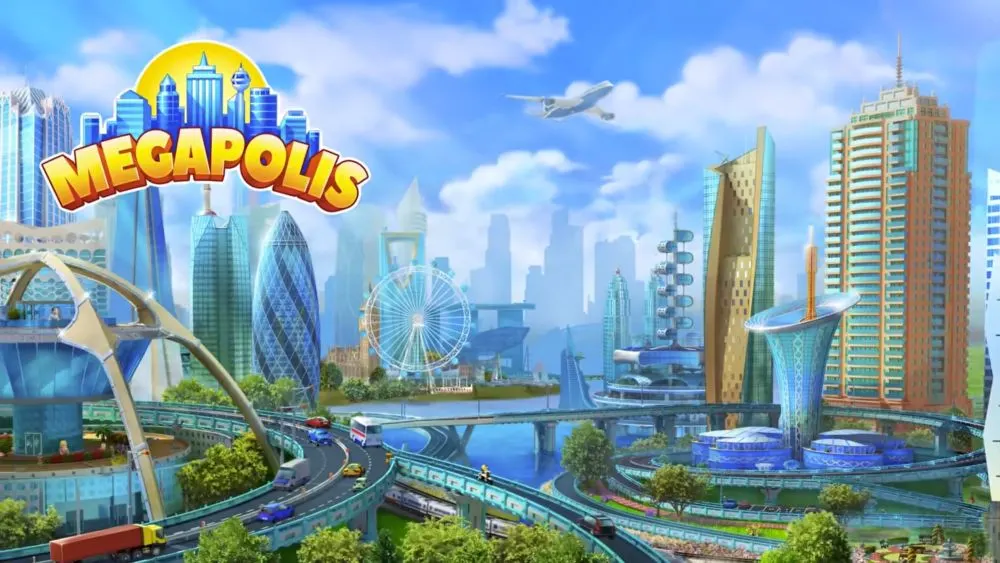
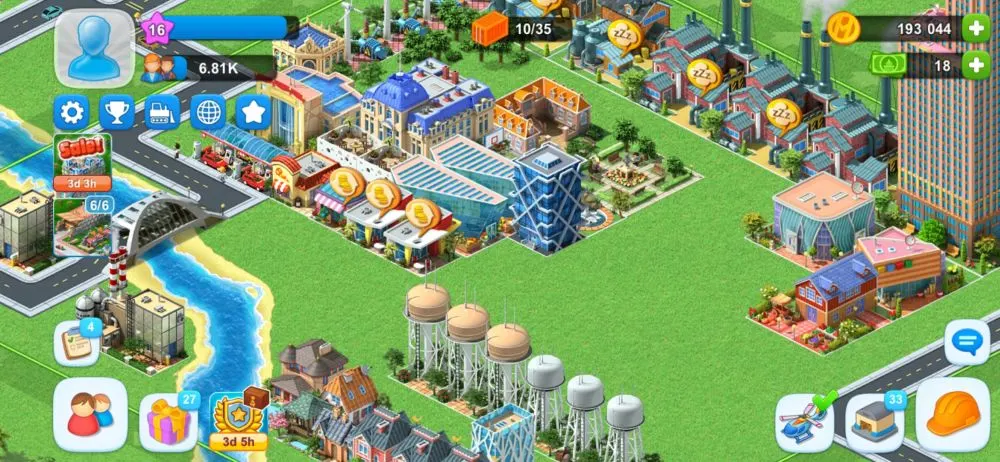
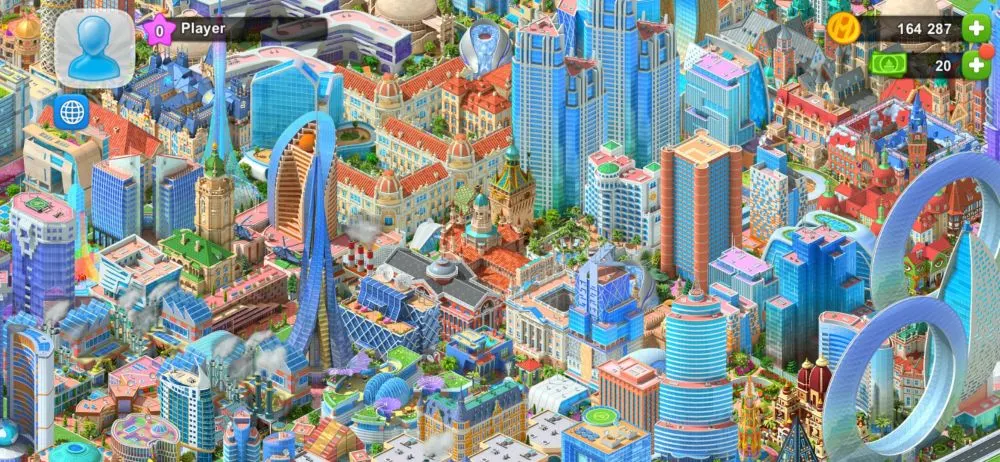
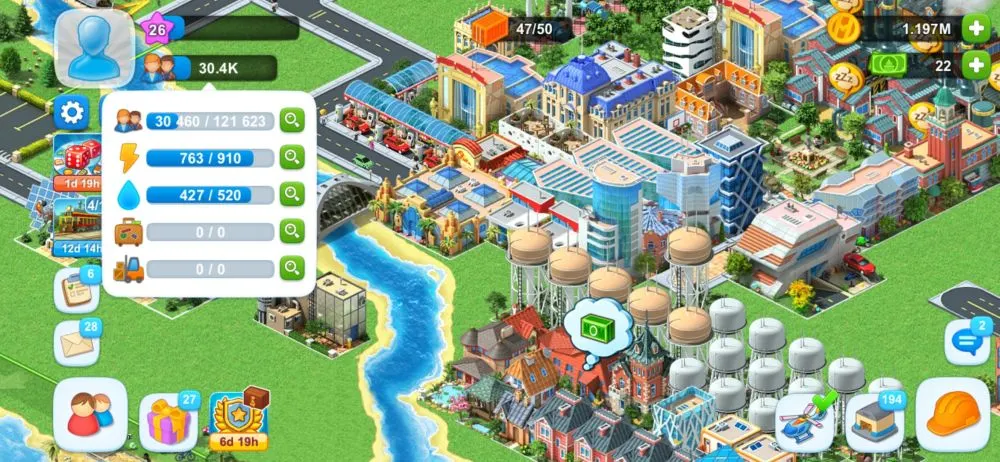
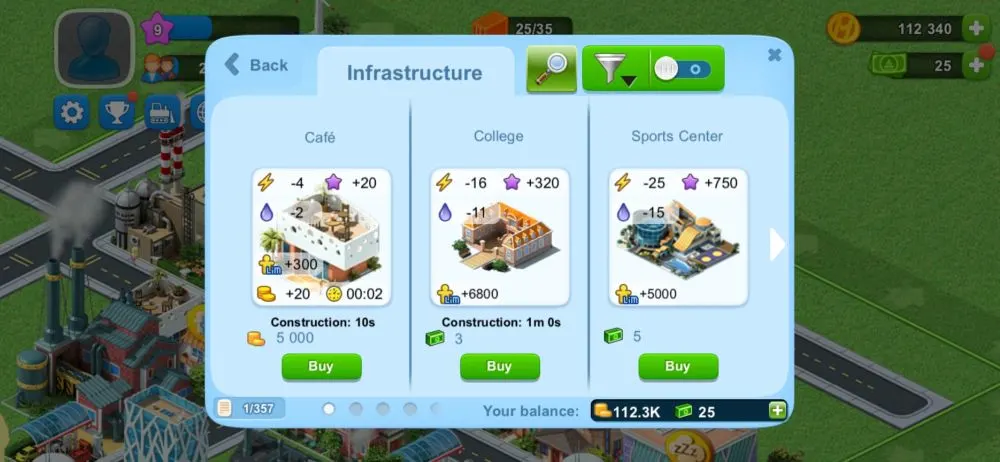
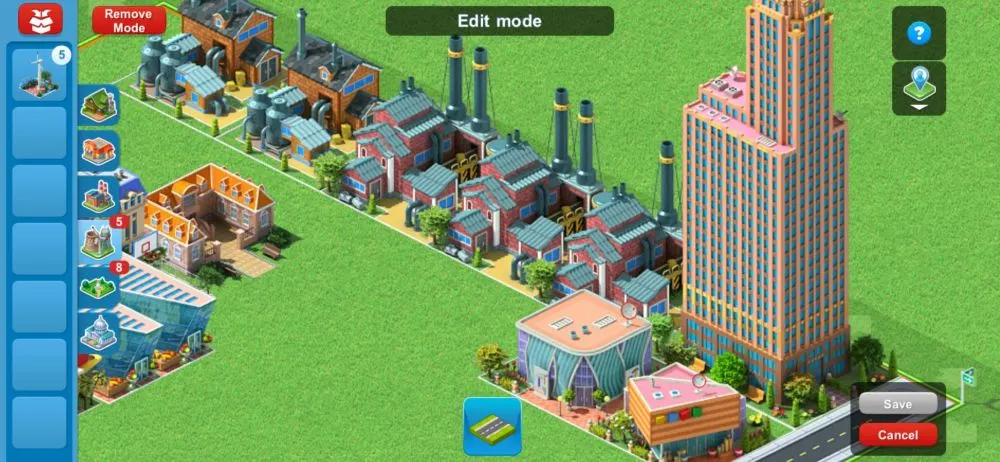
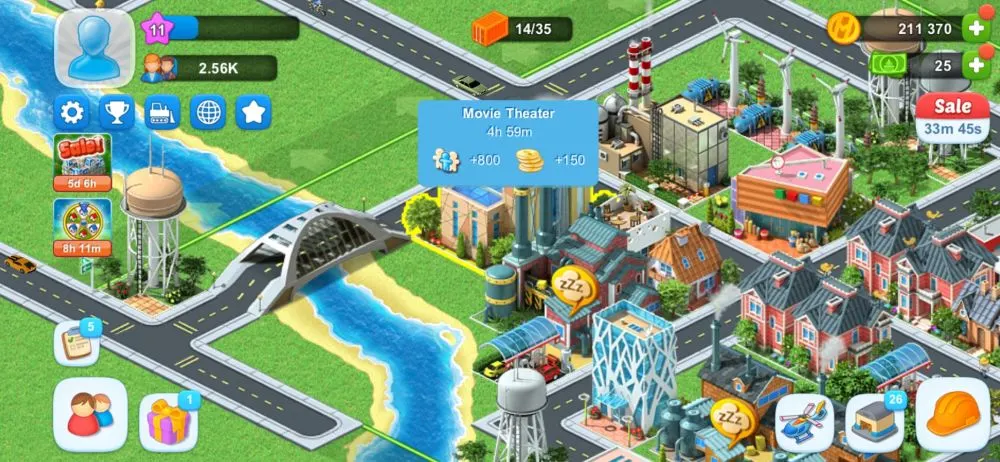
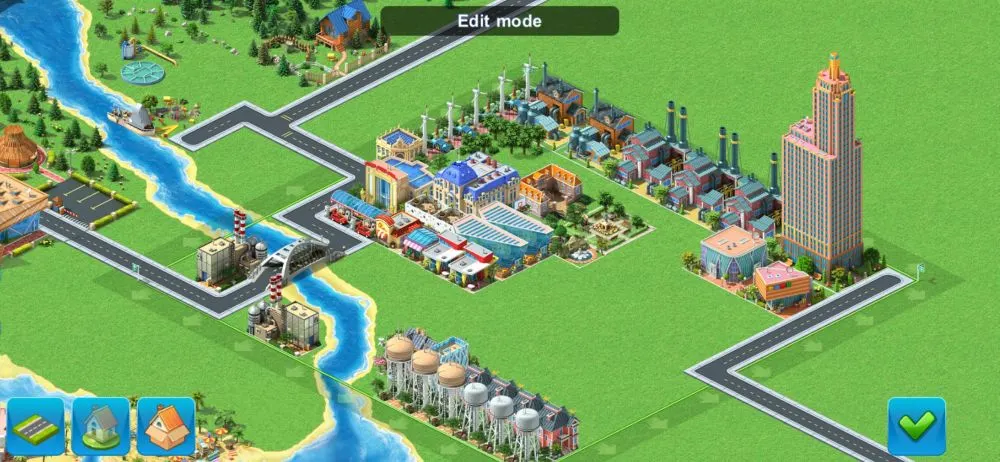
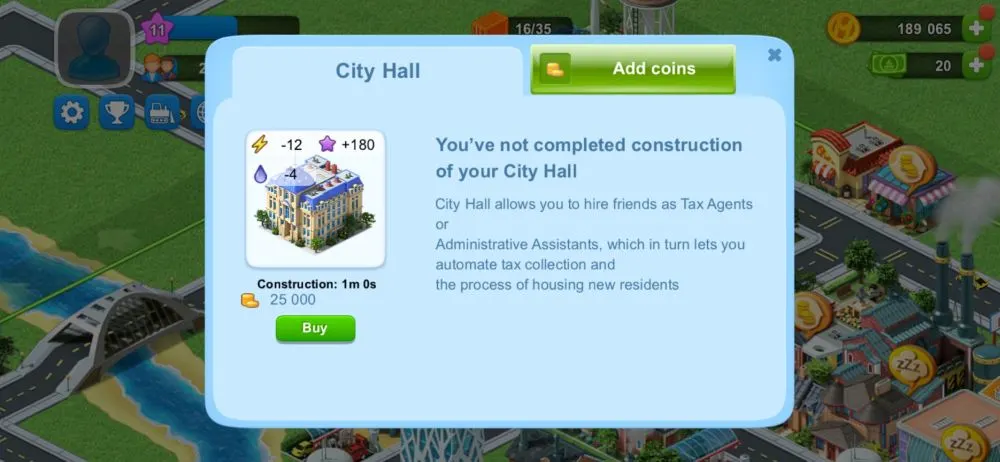
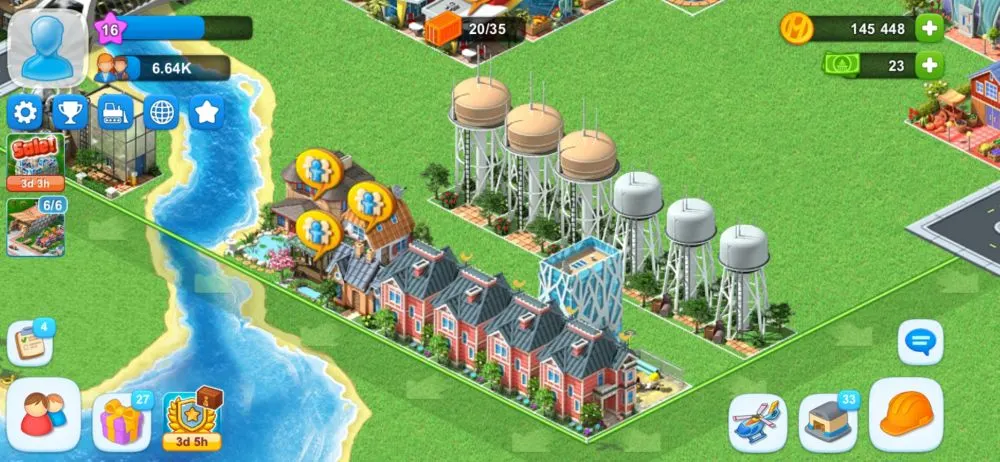
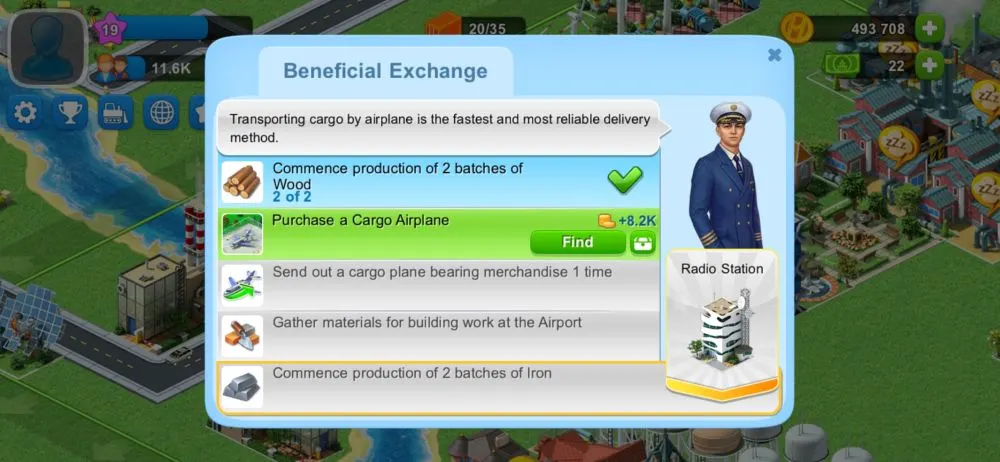
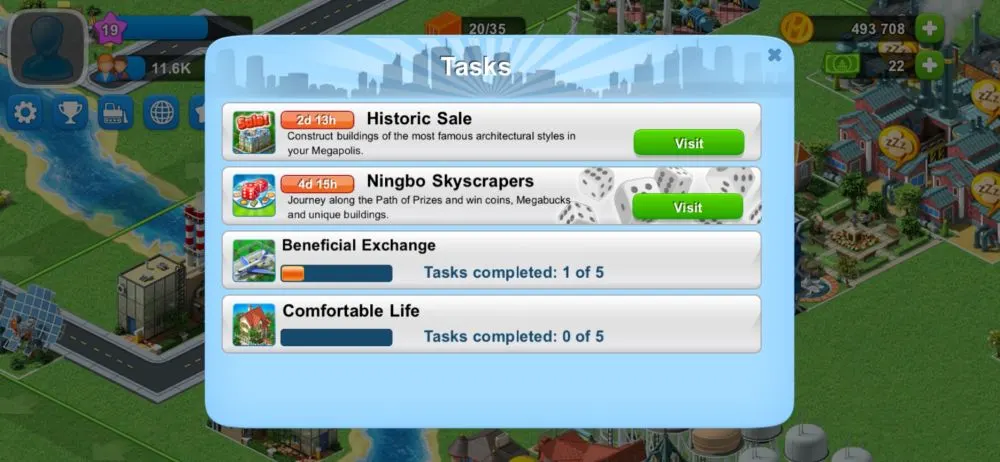
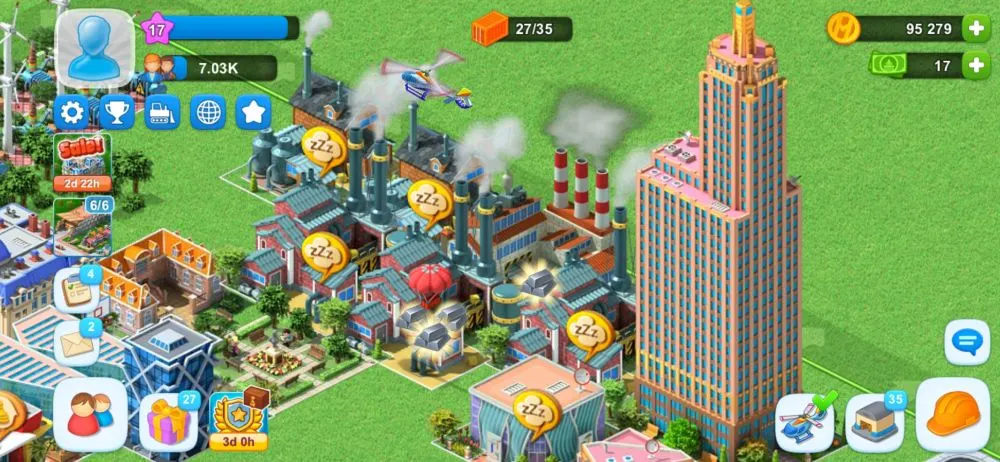
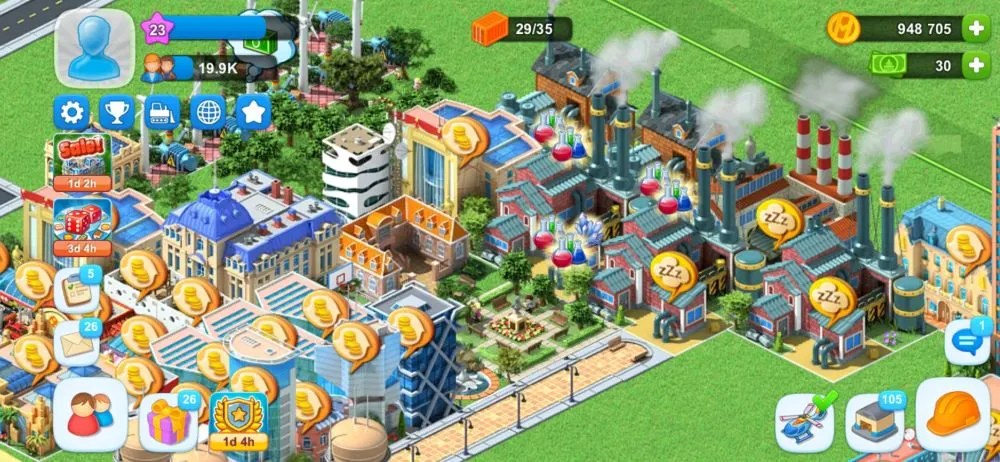
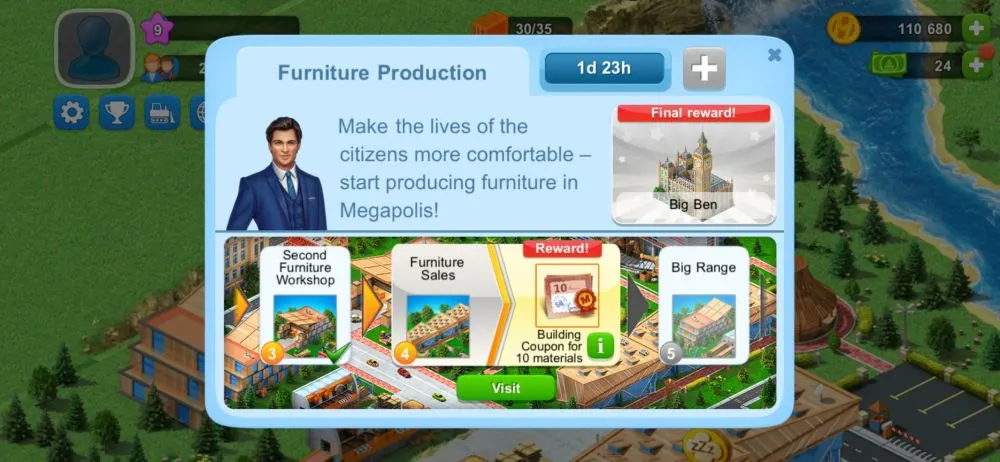
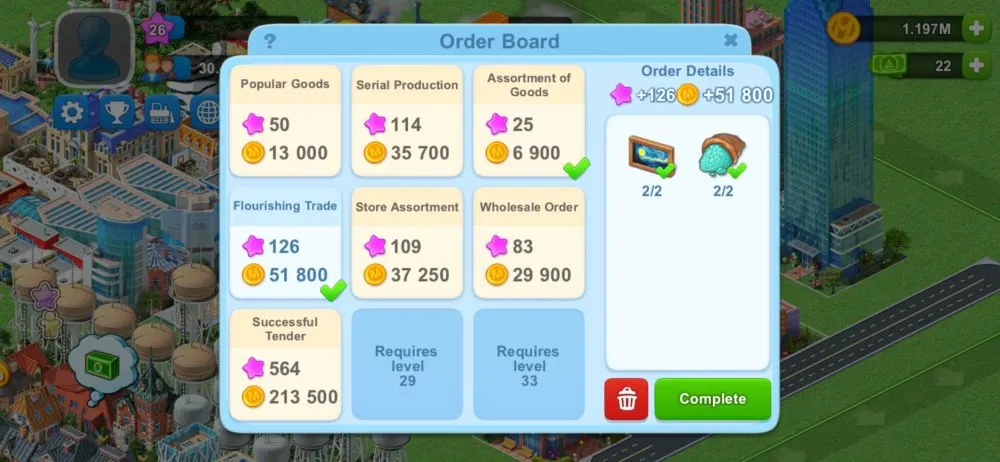
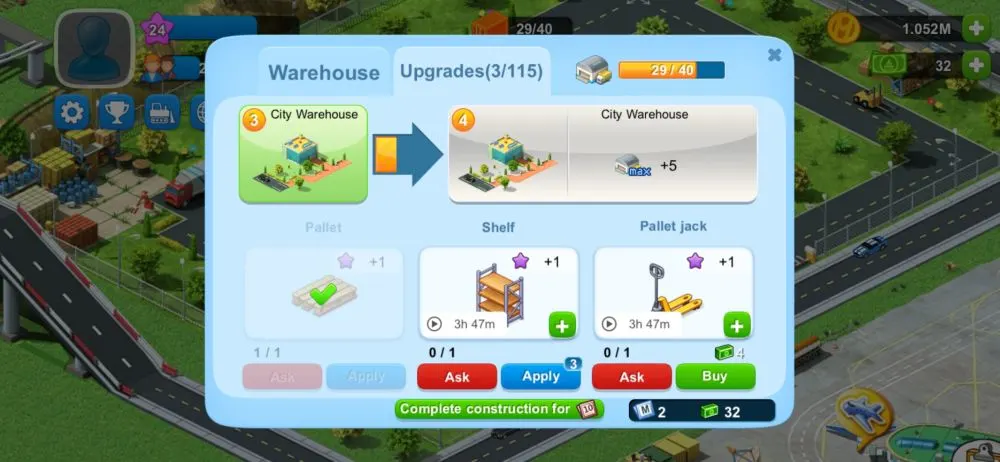
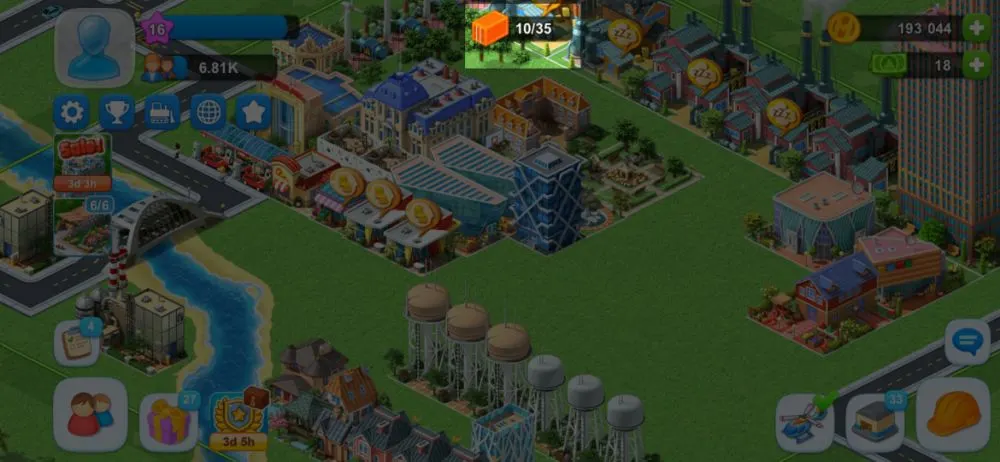
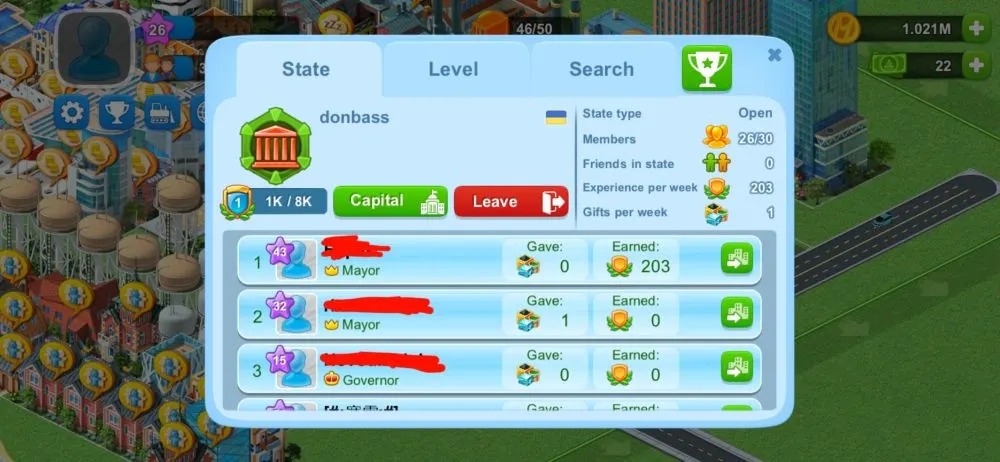
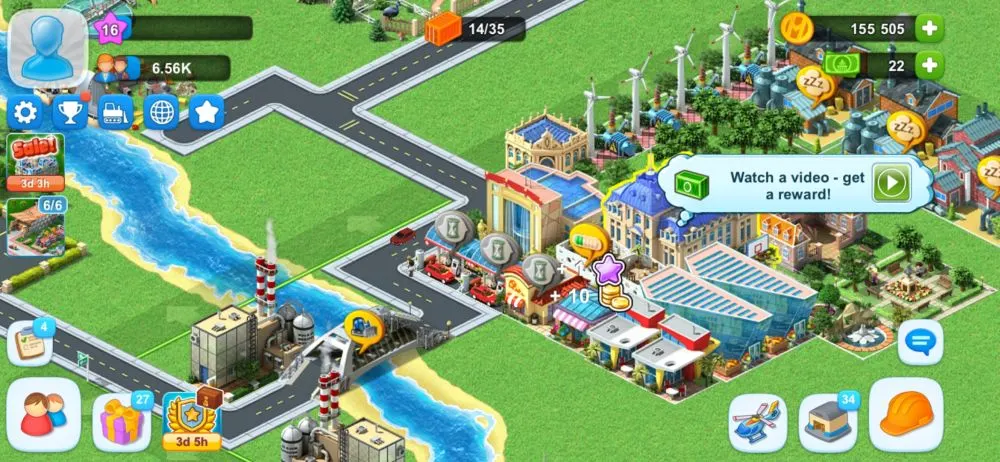
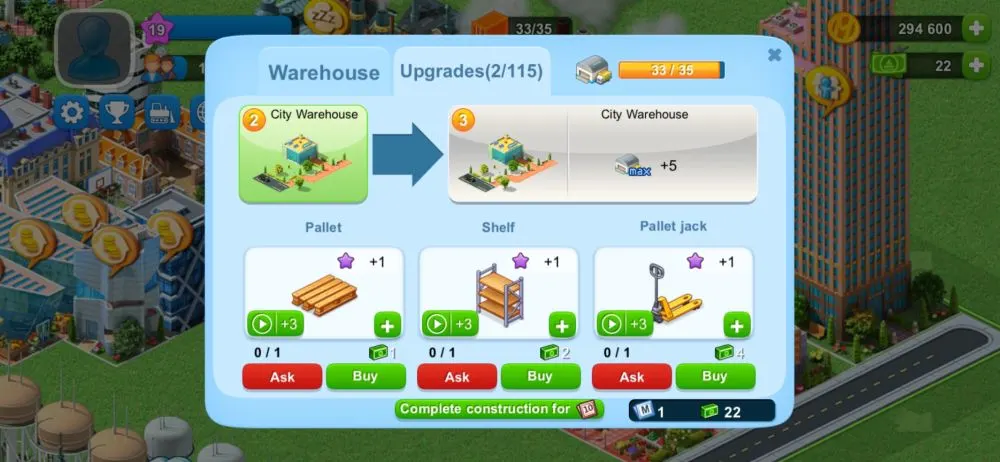
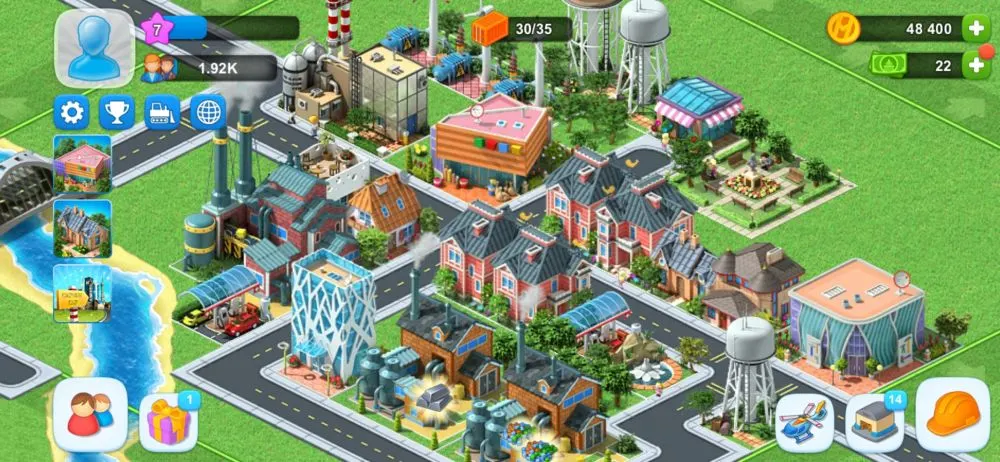
Chip
Friday 7th of April 2023
Materials don't anything in the state. When selected, the materials disappear but don't do anything towards building.